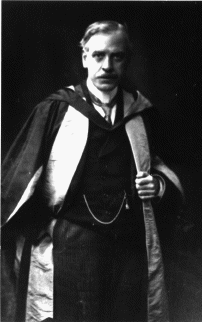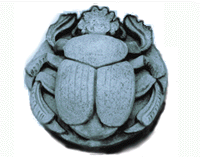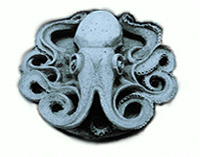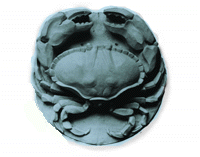
The Department of Zoology at the King's Buildings |
|||
|
In the 1920's the University was filling up with men returning home from the First World War and was very short on space and facilities for teaching or research. Ashworth, therefore, applied great pressure on the authorities to allow the building of a new department for Zoology. In 1923 Laurence Pullar, a keen marine zoologist and friend of Sir John Murray (who had assisted Thomson on the 'Challenger' expedition) visited the cramped department in Old College. He was so appalled by the conditions under which students and staff had to work that he donated £20,000 towards the costs of a new building. Three years later, in 1926 the Carnegie Trust complemented this donation with a grant of £18,000 towards the same purpose. Ashworth himself travelled to America to present the problem to the John D. Rockefeller International Education Board. On Christmas Eve, 1926 the University received a letter stating that the board had authorised an appropriation amounting to £74,000 . Sufficient sums had been raised. The University Court recorded its sincere appreciation of Professor Ashworth's work, saying that "...the provision of funds had been due in large measure to his (Ashworth's) personality and unsparing efforts." In 1927 Cossar Ewart died and Ashworth succeeded to the chair of Natural History. The University Court appointed John Lorimer and John F. Matthews as architects for the new building and they worked closely with Ashworth and his sketch plans. These plans not only included a large lecture theatre and laboratories for research and teaching but also a suite of rooms designed to house the collection and its curator. The main display area on the ground floor covered almost 2500 sq. feet with an upstairs gallery on one side. Both the downstairs hall and the gallery were lined with enormous mahogany display cases in which specimens were arranged. Classical Victorian museums of this style can be found in the Royal Scottish Museum's, 'Victorian Gallery' and also in Dublin's Natural History Museum. The teaching laboratory was adjacent to the museum, encouraging students to take advantage of the collection. 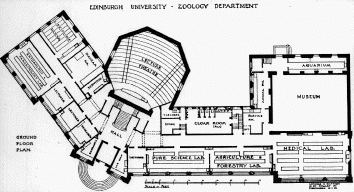
"Fitness for purpose", was the keynote of the design. Lorimer, Matthews and Ashworth worked together to make the building thoroughly practical for its purpose. The large laboratory windows span from ceiling to bench level and face North and North East to gain an even light ideal for microscopy and other work. A special glass was developed for the museum areas of the building by Messrs Chance of Birmingham, which diminishes the sun's ultra-violet rays, thus greatly reducing the fading of the specimens' colours. The building also contains a library of 8,000 volumes as well as laboratories for research and photography. 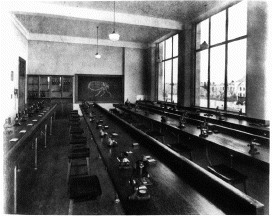 Buildings designed with mottos such as "Fitness for purpose" often become
dull and rather plain to look at due to an over indulgence with practicality.
This potential problem was solved by a decorative front entrance and the
addition of a series of oval plaques in high relief,
sculpted by Phyllis Bone. Phyllis Bone,
who was the first female Royal Scottish Academician, and also responsible
for the extensive work to be found on the National War Memorial in Edinburgh
Castle, modelled representative animals from each of the principal
zoogeographical regions in clay and had them cast in artificial stone.
The Palaeartic region is represented by a reindeer, a golden eagle and a
polar bear. The Neartic region by a beaver and a bison. The Ethiopian region
by an aardvark, a chimpanzee and a lion. The Oriental region by an Indian
elephant, a rhinoceros and a tiger. The last three ovals represent Australia
(a kangaroo), New Zealand (a pair of Sphenodon lizards) and South America
(the nine-banded armadillo). The invertebrates are represented by a dung beetle, an octopus and a crab.
Phyllis Bone also designed and had cast in bronze, the
cats and monkeys which decorate the finials of the balustrade on the main
staircase of the building.
The building was completed in 1929 and was opened by Prince George on the
15th May. It still serves the University well today, albeit with certain
internal modifications and several external annexes. 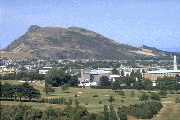
King's Buildings Campus As one might expect, reports from some of Ashworth's students suggest a man totally devoted to his work and his department. When the new building was completed, Ashworth regarded it as preciously as he would one of his own children. When a student scored his name into a lecture bench Ashworth had the whole fifteen foot bench replaced and left the bill in the hands of the student. A colourful insight into student life in the late 1930's-early 40's is provided by J.K.B. Craw, an ex-student of the department. "... One favourite ploy was to make a study of the museum displays shortly before a practical exam and one could play a kind of Kims game by spotting the empty spaces from which the jar or the mount had been taken to confront the students later in the day." "The museum in the 1930's was presided over by one - Mr Brook - an eccentric and lugubrious looking gentleman who used to embarrass his companions by going to the bar and asking for two empty glasses and then producing his own flask of spirits. First to third year students were not permitted to use the library, but in the final year we were granted right of entry and were issued with a key. We were also allowed to take morning tea in the colloquium room on the corner of West Mains and Mayfield Roads. We sat at a huge, solid oak table on which Sir John Murray prepared the 'Challenger' reports. First year lectures were very formal on Monday and Wednesday afternoons when the medicals also attended and class cards were collected at the door by the servitors, resplendent in top hat and frock coat with badge of office; their duty was to usher the Professor or lecturer in and then solemnly close the doors behind him - latecomers were excluded. We were issued with outline headings of the lecture, which my brother and fellow research students called 'comic cuts'." "I was the first wartime student and in 1939 I recall filling sandbags outside the front door when I witnessed a dogfight between RAF fighters and Luftwaffe bombers returning from a raid on the Forth Bridge. We could clearly see the swastika sign on the planes. There were no blackout facilities in the building and all work had to end by 3.30 in the afternoon during the winter." | |||







